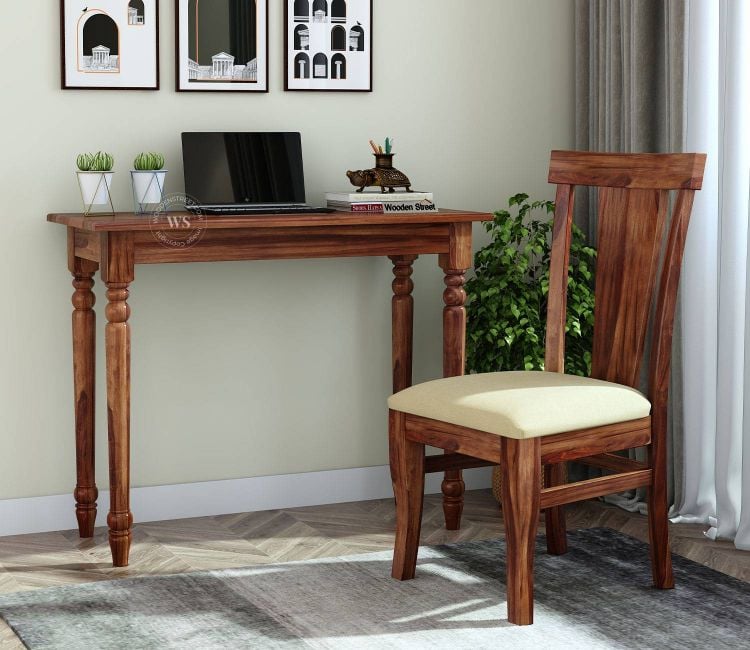A study table and chair are essential pieces of furniture in every household, especially for students and professionals who spend long hours reading, writing, or working at home. While these pieces are built for durability, proper care and regular maintenance can significantly extend their lifespan. In this article, we’ll walk through practical tips to help you maintain your study table and chair for years to come.
1. Choose the Right Location
Before maintenance begins, it's essential to consider where your furniture is placed. Avoid putting your study table and chair near windows where direct sunlight can cause fading or warping. Similarly, keep them away from humid areas to prevent moisture damage, especially if they are made of wood.
A location with moderate light, good air circulation, and minimal exposure to moisture or dust is ideal for prolonging the life of your furniture.
2. Clean Regularly and Properly
Routine cleaning helps keep your study furniture in good condition. Here’s how you can clean different materials effectively:
- Wooden surfaces: Wipe with a dry or slightly damp soft cloth. Avoid using harsh chemicals that may strip the finish.
- Metal frames: Use a damp cloth with mild soap, then dry it immediately to prevent rust.
- Plastic or laminate: Clean with a gentle cleaner and a microfiber cloth. These surfaces are less sensitive but still benefit from regular upkeep.
- Fabric chairs: Vacuum regularly and spot-clean stains with mild soap and water or a fabric-safe cleaner.
Make sure to clean beneath the table and chair, where dust tends to accumulate unnoticed.
3. Protect the Surfaces
To avoid scratches and stains:
- Use mats or coasters under items like cups or laptops.
- Place a desk pad or writing mat on the tabletop to protect against pen marks and indentations.
- Avoid placing hot items directly on the surface, especially on wooden or laminated tables.
- Use chair leg protectors or pads to prevent damage to your flooring and reduce chair wear.
Small protective habits go a long way in preserving both aesthetics and structure.
4. Tighten Screws and Joints
Over time, screws and joints can loosen due to daily use. Wobbly chairs or squeaky tables are not only annoying but can also pose a safety risk.
- Check for any loose screws, bolts, or hinges at least once every two to three months.
- Use appropriate tools to tighten them. If any parts are stripped or worn out, replace them promptly.
This simple habit maintains stability and prevents long-term damage.
5. Avoid Overloading
Study tables often double as storage spaces, but overloading drawers or tabletops can lead to warping, sagging, or breakage.
- Stick to the recommended weight limits for your furniture.
- Organize items in shelves or cabinets instead of piling them on the table.
- Use a wall-mounted bookshelf to reduce clutter on the table surface.
Reducing the load also makes the furniture easier to clean and maintain.
6. Protect Against Moisture and Spills
Spills are inevitable, especially when you’re working or studying for hours with beverages or snacks close by. However, water and other liquids can cause significant damage, particularly to wooden or fabric components.
- Clean spills immediately to avoid stains or swelling.
- Use waterproof table mats or covers for added protection.
- In high-humidity regions, consider using a dehumidifier to protect wooden components from expanding or contracting.
Preventive care saves you from more costly repairs down the line.
7. Lubricate Moving Parts
If your chair has wheels or adjustable features like a reclining back or height adjustment, regular lubrication is key.
- Use silicone spray or light machine oil to keep moving parts operating smoothly.
- Be careful not to over-lubricate, which can attract dust or cause buildup.
Maintaining mobility features ensures a comfortable and functional setup.
8. Store When Not in Use
If your study area is only used seasonally or occasionally (e.g., during exams), consider storing your furniture correctly when not in use.
- Cover the study table and chair with dust covers or sheets.
- Avoid stacking heavy objects on them during storage.
- Ensure they are stored in a dry, temperature-controlled area to avoid warping or rust.
Proper storage protects your investment and extends the furniture’s life.
9. Periodic Inspection and Professional Help
Every few months, inspect your furniture for early signs of wear, such as:
- Cracks in wooden parts
- Rust on metal components
- Fading or discoloration of surfaces
- Wobbling joints or broken wheels
If you find damage beyond your DIY ability, consult a furniture repair professional for expert assistance. Timely repairs can prevent minor issues from becoming major problems.
10. Encourage Good Usage Habits
Lastly, ensure that everyone using the furniture follows good practices:
- Avoid dragging the chair across the floor.
- Don’t sit on the edges or lean too far back.
- Teach children to treat the furniture gently.
When used responsibly, a study setup can last for years without needing frequent replacements.
🔑 One highly recommended setup is a quality study table with chair for students, as it provides ergonomic comfort and promotes better study habits—especially when properly maintained.





Comments